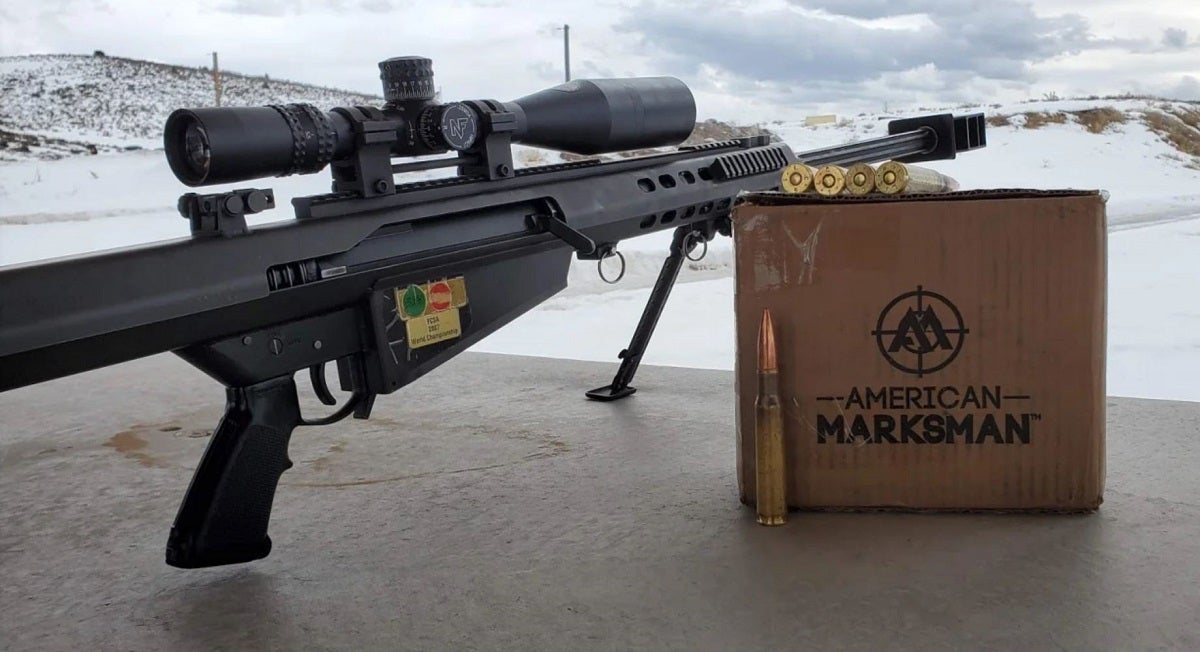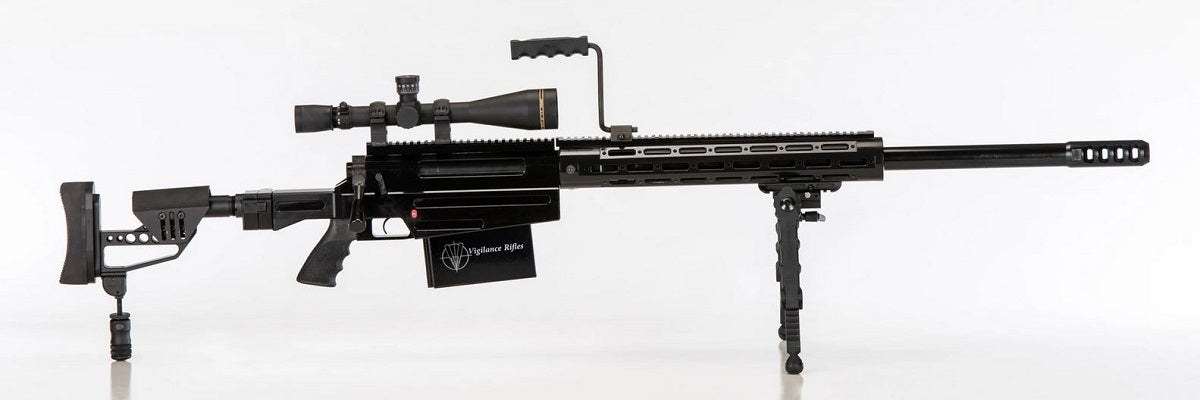A Frenchman Reinvented the .50-Cal to Beat a Gun Ban! Here’s How
Travis Olander 12.28.23

For many of us who love guns, owning a .50 cal rifle is a lifelong dream – and, while easier than ever before to get your hands on one, some governments simply don’t allow it; there is a gun ban in place. Us Americans have to contend with a patchwork of state laws that fly in the face of the Second Amendment, but we’re not alone. Many Europeans love guns as much as we do, but, without their own Constitutions enshrining the right to bear arms, they’re often left to suffer even more restrictive laws. So, in 2007, once Frenchman – Eric Danis, then owner of French arms maker Dan Tec – decided to do something about the widespread gun ban of .50 BMG chambered rifles: he simply reinvented the cartridge to bypass those laws.
50 BMG Rifle Coverage on AllOutdoor
- Video: 50 BMG (and Other Calibers) vs. Bulletproof Glass
- 50 BMG Over Water – Will it Wake or Rooster Tail? (Video)
- TFBTV – NEW Zastava “Black Spear” Serbian .50 Caliber Sniper Rifle
- Bullpup .50 BMG: St. George Arms Leader 50A1
Gun Ban – Enter .510 DTC EUROP
At a glance, this big ole’ piece of brass seems identical to any .50 BMG round. But small, key differences in the casing differentiate it from John Moses Brownings’ invention and, importantly, exempt the round from various gun bans. The specifications for the .510 DTC cartridge can be read below:
Specifications – .510 DTC
- Bullet Diameter: 0.510″
- Shoulder Diameter: 0.76″
- Base Diameter: 0.80″
- Case Length: 3.81″
- Overall Length: 4.93″
- Case Capacity: 296 gr. H2O
Specifications – .50 BMG
- Bullet Diameter: 0.510″
- Shoulder Diameter: 0.735″
- Base Diameter: 0.80″
- Case Length: 3.91″
- Overall Length: 5.45″
- Case Capacity: 293 gr. H2O
Comparing specs shows just how incredibly similar both cartridges are. They both use the same 0.510″ diameter bullets, with the same casing – except .510 DTC’s casings are cut down 0.10″, with a steeper shoulder. Case capacity is practically identical, but when both are loaded with 647-grain heads, .50 BMG produces just a bit more power: About 13,310 ft. lbs. of energy at the muzzle, while .510 DTC produces around 12,764 Ft-Lb, a difference of about 4%. Although performance is nearly identical, those differences in the .510 DTC’s casing mean it will not fit in any .50 BMG-chambered rifle. Yet it’s this fitment issue – a deliberate one – that allows .510 DTC and its niche rifles to skirt various gun bans. This includes one that hits close to home, too.
California Gun Ban of .50 BMG – .510 DTC Comes to America
On January 1, 2005, California’s “.50 Caliber BMG Regulation Act of 2004,” which banned all sales of .50 BMG rifles in the state, went into effect. The legislature of California claimed that such rifles “posed a terrorist threat,” even though .50 BMG guns had never once been used in any recorded crime. But because the state’s legislature was so overzealous about banning this famed and loved cartridge, it made a critical error that effectively defeated the bill the moment it was passed. Language throughout the bill specifically targeted .50 BMG cartridges:
“‘.50 BMG cartridge’ is defined as a cartridge that is designed and intended to be fired from a centerfire rifle and that meets all of the following criteria: (1) It has an overall length of 5.54 inches (141 mm) from the base to the tip of the bullet. (2) The bullet diameter for the cartridge is from .510 to, and including, .511-inch (13.0 mm). (3) The case base diameter for the cartridge is from .800-inch (20.3 mm) to, and including, .804 inch. (4) The cartridge case length is 3.91 inches (99 mm).”
Ironically, such language effectively excluded all other .50-caliber rifle rounds, including those – like .510 DTC – that were merely theoretical and not yet manufactured. Thanks to California’s such strict language, all one needed to do was cut down the .50 BMG casing so it no longer met at least one of the above parameters. So, French gun maker Eric Danis merely reduced the case length by a tenth of an inch, rendering the ban – and others like it throughout Europe – completely moot.
Gun Ban – Rifles and Ammo Are Hard to Find
Although the .510 DTC still serves its purpose – California and many other states and countries have banned civilian ownership of .50 BMG rifles – there simply isn’t much demand for the platform. If you want to get your hands on one of these rifles, you’ll need to reach out to the only current manufacture, Vigilance Rifles, in Valley Arizona. They produce the M18, a bolt-action rifle currently retailing for around $10,000.
Finding DTC ammo will be an even greater challenge: no manufacturers currently offer any rounds for retail sale. Instead, you’ll need to make your own. To do that, you’ll need reloading dies, which, at publication, are also not available for retail sale and must be special ordered. But worry not, Californians and those who live in not-so-gun-friendly locales: In direct response to California’s .50 BMG ban, John Barrett, owner of Barrett firearms – famed maker of the M82, M99, M107, and other .50-cal rifles – introduced the arguably more practical and more accurate .416 Barrett.
The .416 is effectively a wildcat .50 BMG case, shortened to around 3.3″ and topped with a bullet weighing around 400 grains. The .416 produces greater muzzle velocity (about 3,150 FPS) and it retains more of its muzzle energy (around 8,770 ft. lbs.) downrange. In fact, it retains supersonic speeds at up to 1,900 yards, with a ballistic coefficient as high as .720, making it one of the most accurate and powerful centerfire cartridges ever produced. So, if you want to chamber a “big, scary bullet” that anti-gun politicians certainly don’t like – but you’re not ready to drop five figures on a rifle and load your own .510 DTCs – head on over to Barrett and consider the .416-chambered M99.



